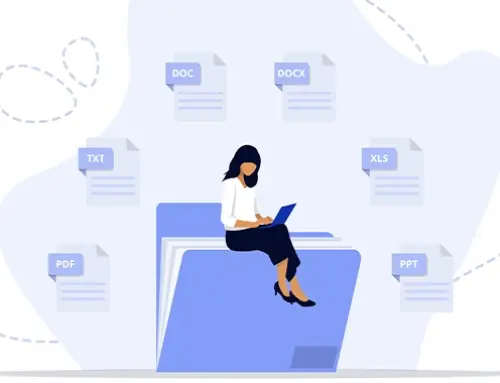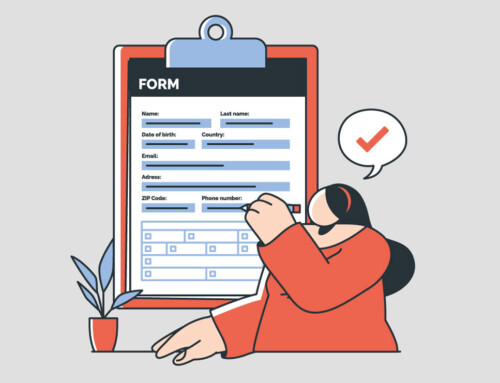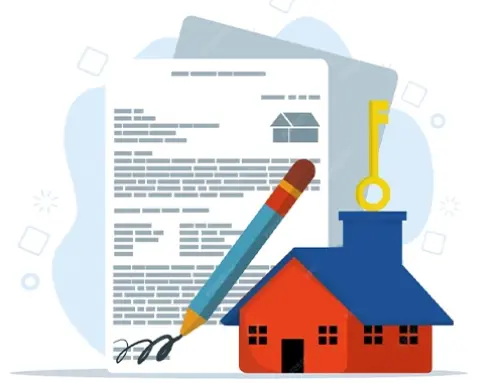Contents
Starting a divorce can be a challenging process that requires careful planning as well as a complete understanding of legal procedures. Knowing the essential steps is crucial to make sure that your rights are protected in good order. This guide provides a step-by-step approach to help you navigate the legal and practical aspects of beginning a divorce.
· Faulty vs. No-Fault Divorce
In a faulty divorce, one spouse alleges that the other’s misconduct was the main reason for the breakdown of the marriage. Common grounds for faulty divorces are as follows: adultery, abandonment, or cruelty. Conversely, a no-fault divorce allows either party to seek dissolution of the marriage without blaming the other one. The most common reason referred to as no-fault divorces is “irreconcilable differences,” which means that the couple is no longer compatible.
· Contested vs. Uncontested Divorce
A contested divorce occurs when the spouses cannot agree on key issues such as property division, child custody, or spousal support. This type of divorce often leads to lengthy legal battles, as the court must make decisions on behalf of the couple. On the other hand, an uncontested divorce is one where both parties agree on all terms. This type of divorce typically proceeds more quickly and with less expense, as it avoids protracted court proceedings.
· Residency Requirements
Every state or jurisdiction has specific residency requirements that must be met before filing for divorce. Typically, this means that at least one spouse must have lived in the state for a certain period, often six months to a year. Failing to meet these requirements can result in delays or the dismissal of your case, so it’s crucial to confirm the residency rules in your area before filing.
Gather Necessary Documentation
As you prepare to start the divorce process, gathering the necessary documentation is a critical step. These documents will provide a clear picture of your financial situation, marital assets, and any relevant agreements, forming the foundation of your case.
· Financial Records
Financial transparency is vital in divorce proceedings, particularly when determining alimony, child support, and the division of assets. Begin by compiling comprehensive records of your finances, including bank statements, tax returns, pay stubs, retirement account statements, and investment portfolios. Having a complete and accurate record of your finances will ensure that your rights are protected and that any financial settlements are based on the full scope of your assets and liabilities.
· Property Ownership Documents
Property division is often a contentious issue in divorces, making it essential to have proper documentation of all assets. Collect deeds, mortgage statements, and any appraisals of real estate owned jointly or separately. Additionally, include documentation for any vehicles, valuable personal property, and other significant assets. This information will be crucial when determining how to equitably divide marital property.
· Proof of Marriage
Your marriage certificate is a fundamental document in any divorce proceeding, as it provides legal proof of the marriage that is being dissolved. Ensure that you have an official copy of your marriage certificate, which will be required when filing the divorce petition and throughout the legal process.
· Child Custody Agreements (if applicable)
If you have children, existing custody agreements or court orders regarding custody and visitation must be included in your documentation. These agreements will influence decisions on child custody and support, making it essential to have current and accurate records. If no formal agreements are in place, prepare to document any informal arrangements or agreements made between you and your spouse.
Gathering these documents early in the process will not only streamline your divorce but also help avoid delays and disputes over incomplete or missing information.
Seek Legal Advice
Navigating the complexities of a divorce requires expert legal guidance. Consulting with a qualified divorce attorney ensures that you understand your rights, obligations, and the legal processes involved, helping you make informed decisions throughout the divorce.
· Choosing a Divorce Attorney
Selecting the right divorce attorney is one of the most important decisions you will make during this process. Look for an attorney who specializes in family law and has experience handling cases like yours. Consider factors such as the attorney’s reputation, track record, and approach to client communication. A skilled attorney will not only provide legal expertise but also offer strategic advice tailored to your unique circumstances.
· Initial Consultation
The initial consultation with a divorce attorney is an opportunity to discuss your situation, ask questions, and evaluate whether the attorney is the right fit for your case. During this meeting, be prepared to share relevant details about your marriage, finances, and any specific concerns you may have. The attorney will provide an overview of the legal process, potential outcomes, and the next steps you should take. This consultation is also a chance to discuss the attorney’s fees and payment structure, ensuring transparency from the outset.
· Understanding Legal Fees
Legal fees can vary significantly depending on the complexity of your divorce and the attorney’s experience level. It’s important to have a clear understanding of the costs involved before proceeding. Some attorneys charge a flat fee for uncontested divorces, while others may bill hourly for more complex cases. Be sure to ask about any additional costs, such as court fees, mediation expenses, or charges for document preparation. Understanding these fees upfront will help you budget appropriately and avoid unexpected financial strain during the divorce process.
Seeking legal advice early in the process can help you avoid costly mistakes and ensure that your rights are protected throughout the divorce. A competent attorney will guide you through each step, providing the support and expertise necessary to achieve a fair and equitable outcome.
File the Divorce Petition
Filing the divorce petition is the formal step that initiates the legal process of dissolving your marriage. This step requires careful preparation and adherence to legal protocols to ensure that the petition is correctly filed and served.
· Preparing the Divorce Petition
The divorce petition, also known as the complaint for divorce, is a legal document that outlines your request to end the marriage. It typically includes essential information such as the names of both spouses, the date of marriage, and the grounds for divorce. The petition may also address issues like child custody, spousal support, and the division of property. It’s crucial to work with your attorney to ensure that the petition accurately reflects your circumstances and includes all necessary details. The clarity and completeness of this document can significantly impact the course of your divorce proceedings.
· Filing with the Court
Once the divorce petition is prepared, it must be filed with the appropriate court in your jurisdiction. This step formally opens your divorce case and begins the legal process. Filing the petition typically requires payment of a court fee, the amount of which varies depending on the location. After filing, the court will assign a case number and may set a date for the first hearing or issue further instructions on how the case will proceed. It’s important to keep a copy of the filed petition and any related documents for your records.
· Serving the Divorce Papers
After filing the petition, the next step is to serve the divorce papers to your spouse. Serving the papers is a legal requirement and ensures that your spouse is formally notified of the divorce proceedings. This process must be carried out according to specific legal guidelines, which vary by jurisdiction. Typically, the papers can be served by a sheriff, a process server, or, in some cases, through certified mail. Your spouse must then sign an acknowledgment of receipt, which is returned to the court as proof that the service was completed. If your spouse cannot be located or refuses to accept the papers, alternative methods of service may be required, such as publication in a local newspaper.
Filing the divorce petition is a pivotal step that sets the legal process in motion. By ensuring that your petition is thoroughly prepared, properly filed, and correctly served, you lay the groundwork for a smoother and more efficient divorce process.
Responding to a Divorce Petition (if applicable)
If you are on the receiving end of a divorce petition, responding promptly and appropriately is crucial. Your response will influence the direction of the divorce proceedings and protect your legal rights.
· Understanding the Response Deadline
Once you have been served with a divorce petition, you are legally required to respond within a specific timeframe. This deadline varies by jurisdiction but typically ranges from 20 to 30 days from the date of service. Failing to respond within this period can result in a default judgment, where the court may grant the petitioner’s requests without your input. It is essential to note the deadline and take immediate action to prepare your response.
· Drafting a Response
Your formal response to the divorce petition, often called an “answer,” addresses each of the claims made by your spouse. In this document, you will agree or disagree with the statements and requests outlined in the petition. Additionally, you may present your own claims regarding matters such as property division, child custody, or spousal support. It is advisable to work closely with your attorney when drafting your response to ensure that your interests are fully represented. A well-prepared response can provide a solid foundation for negotiations or court proceedings.
· Potential Outcomes of the Response
Depending on the nature of your response, several outcomes are possible. If you agree with the terms of the divorce petition, the process may move forward as an uncontested divorce, potentially saving time and legal expenses. If you contest any aspects of the petition, the divorce may become contested, leading to negotiations or a court hearing to resolve the disputed issues. In some cases, mediation may be recommended or required to facilitate an agreement between both parties. Your response will significantly influence the trajectory of the divorce, so it is important to carefully consider your position and the potential consequences.
Responding to a divorce petition is a critical step that requires careful attention to detail and an understanding of the legal implications. By responding within the designated timeframe and with a well-prepared answer, you protect your rights and position yourself for a fair resolution of the divorce.
Navigating the Divorce Process
Once the divorce petition has been filed and responded to, the process of legally dissolving the marriage moves forward. This phase involves several key steps, from temporary arrangements to finalizing the divorce decree. Each step must be handled with care to ensure a fair and equitable outcome.
· Temporary Orders
During the divorce process, temporary orders may be necessary to address immediate issues such as child custody, spousal support, or living arrangements. These orders are legally binding and remain in effect until the final divorce decree is issued. Either party can request temporary orders by filing a motion with the court. The court will then hold a hearing to determine the terms of the temporary orders based on the needs and circumstances of both parties. Temporary orders provide stability during the divorce process and help manage day-to-day responsibilities while the divorce is pending.
· Mediation and Settlement Negotiations
Mediation is a common method used to resolve disputes in a divorce without going to trial. In mediation, both parties meet with a neutral third party, the mediator, who helps facilitate discussions and negotiations. The goal is to reach a mutually agreeable settlement on issues such as property division, child custody, and support. Mediation is often preferred because it is less adversarial, more private, and can be more cost-effective than litigation. If mediation is successful, the agreed-upon terms are drafted into a settlement agreement, which is then submitted to the court for approval. Even if mediation is not required by the court, it can be a valuable tool in reaching a resolution.
· Court Hearings
If the parties are unable to reach an agreement through mediation or negotiation, the divorce may proceed to court hearings. During these hearings, both sides present evidence and arguments on disputed issues, such as financial matters or child custody. The judge will review the evidence and make decisions based on the law and the best interests of any children involved. Court hearings can be time-consuming and expensive, but they are sometimes necessary when significant disagreements cannot be resolved otherwise. It is important to be well-prepared for these hearings, as the judge’s rulings will form the basis of the final divorce decree.
· Finalizing the Divorce Decree
The divorce decree is the final legal document that officially ends the marriage and outlines the terms of the divorce. It includes details on property division, child custody, support obligations, and any other relevant matters. Once all issues have been resolved, either through negotiation, mediation, or court rulings, the divorce decree is submitted to the court for approval. After the judge signs the decree, the divorce is finalized, and both parties are legally bound by its terms. Any violation of the decree can result in legal consequences, so it is crucial to fully understand and comply with its provisions.
Navigating the divorce process requires careful management of each step, from temporary orders to the final decree. With proper legal guidance and a clear understanding of your rights and obligations, you can work toward a resolution that serves your best interests and those of any children involved.
Successfully Navigating Your Divorce Journey
Embarking on the journey of divorce is undoubtedly challenging, but with the right preparation and legal guidance, you can navigate the process effectively. From understanding the legal grounds for divorce to gathering necessary documentation, seeking expert legal advice, and following each step carefully, you lay the groundwork for a fair and equitable outcome. Whether the divorce is contested or uncontested, staying informed and proactive will help you manage the emotional and financial aspects with greater confidence.
As you move forward, consider leveraging legal case management software to streamline the process and ensure that nothing is overlooked. RunSensible’s comprehensive tools can assist you in managing your case efficiently, saving time and reducing stress during this critical time. Try RunSensible’s legal case management software today and experience how it can support you in achieving a smoother and more organized divorce process.
FAQs
1. What is the difference between a contested and an uncontested divorce?
A contested divorce occurs when the spouses cannot agree on key issues such as property division, child custody, or spousal support, leading to legal battles that require court intervention. An uncontested divorce, on the other hand, is where both parties agree on all terms, allowing for a faster and less expensive process without the need for prolonged court involvement.
2. How long does the divorce process typically take?
The duration of the divorce process varies depending on factors such as the complexity of the case, whether the divorce is contested or uncontested, and the specific legal requirements of the jurisdiction. An uncontested divorce can be finalized in a few months, while a contested divorce may take a year or more due to negotiations, mediation, and potential court hearings.
3. Do I need a lawyer for an uncontested divorce?
While it is possible to file for an uncontested divorce without a lawyer, it is advisable to seek legal counsel to ensure that all legal documents are properly prepared and that your rights are fully protected. A lawyer can help avoid potential pitfalls and ensure that the final divorce decree accurately reflects the agreed-upon terms.
Disclaimer: The content provided on this blog is for informational purposes only and does not constitute legal, financial, or professional advice.








